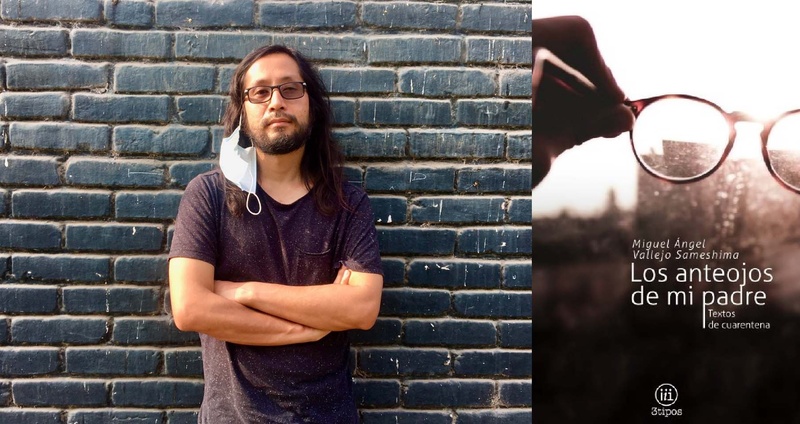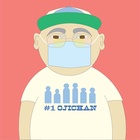When one reads Miguel Ángel Vallejo Sameshima (Lima, 1983) it is possible that one feels that one already knows him. His writing, the characters that parade through his stories, some of his experiences or cultural references sound spontaneous and transparent, although these occur in Granada, Lisbon or Prague, some of the settings of his most recent book: My Father's Glasses (The 3 types, 2020), which he wrote in about 50 days and which he has published in digital format.
His long hair and mustache make him look like a character from kung fu movies, but his soft voice and thin glasses reflect more of a kind professor, which is closer to his work teaching drama classes at the Ricardo Palma University. his literary tasks as a journalist, cultural manager and theater director, among other similar occupations, than to flying kicks (although in the book he confesses that he has acted in short films as a Chinese gangster).
Academic life took him to Spain in 2017, to study a master's degree in Literary and Theater Studies at the University of Granada. This trip, with a series of excursions through Europe, and reflecting on his condition (and that of other students) as a migrant, are part of this book, which is also a diary about the Covid-19 quarantine. “I wrote about the people who I felt were furthest away,” says Miguel Ángel, who took a series of personal objects as a pretext to write from them.
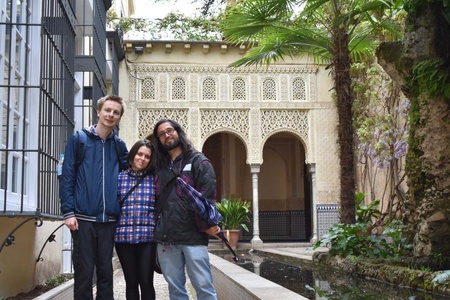
Look closely
In Michelangelo's thirteenth book, he opted for a little-explored genre: the diary. Previously he had written theater, children's books, horror literature and the script for a comic book ( Ribeyrito, historia sin plumas , Altazor, 2014, illustrated by Uilmer Fashé). His biography also highlights the bibliographic catalog of the Lo cholo colloquium in Peru , from 2008, the anthology of micro-stories “Diez por ten” (Altazor, 2016) and “Vallejo Urreta: stories of a Peruvian family” (Altazor, 2015), his previous biographical approach.
That book, a tribute to his father's family, was a kind of leveling off for his family writing. His work as a cultural journalist had brought him closer to his Japanese ancestry. His collaboration with Kaikan magazine and Discover Nikkei led his father to ask him to write about the Vallejos. The answer was this book. “It is a non-fiction narrative, as a report, about my paternal family, which uses testimonies from twenty relatives and covers five generations, from my great-great-grandparents in Oyón” 1 .
Since that investigation, Miguel Ángel looked more closely at his family relationship, which in this book has the final chapter dedicated to Ángel Rodolfo. “My father was a cold man with his partners and children and generous with acquaintances and strangers,” he writes, although he later clarifies that this may be “partially false.” A reckoning in which he also fulfills his debts: “The old man put up the money so that I could play anarchist and go backpacking because he knew that when I returned home I could eat hot, sleep in a warm bed and give myself a long shower.”
In the gaze of Michelangelo, who remembers more than once that his left eye is missing, which he lost in an accident when he was a child, there is an exercise in sincerity, criticism and tenderness (as when he writes: “I adore “Elephants have what characterizes a good human being: they can destroy everything around them, but they decide not to.” The trained vision of the narrator who has learned to get closer to understand what is in front of him and show it without so many decorations, everything very transparent.
Emergency literature
“Telling stories is trying to put together fragments of something that is not broken, that is being made and that will have no defined shape. Who knows what fragments this pandemic will leave behind,” writes Miguel Ángel and that was part of the reason for this ebook that brings together friend complicities, social criticism, loves, pranks, identity crisis and the close relationship with Ana, his mother. “For twelve weeks now, my mother and I have gone up to the roof of the building to exercise after lunch, and every night we watch a movie or a few episodes of a series.”
A central theme in My Father's Glasses are the events of the first months of the pandemic in Peru. “I published it because I wanted it to have the energy of that quarantine, to tell the things that were not known at that time. If I had published it later I would have a different point of view,” says Miguel Ángel, who classifies this book in the “emergency literature” category, although it appears on Lektu , a horror book sales platform (but nothing more terrifying than this one). virus, the author clarifies) and has an intimate tone.
“Literature is entertainment that disguises itself as culture, that is why it is not read in Peru,” says Vallejo Sameshima, and precisely for this reason he is a member, together with Raúl Quiroz and Daniel Collazos, of Los 3 Tipos , a publishing house and group to share his interests. about monsters, serial killers and conspiracy theories, which has been developing conversations through video broadcasts on Facebook. “With the paralysis of the publishing world, I realized that this book was made for the digital world, I wrote as if I were sending an email to someone I love or a WhatsApp,” he comments by phone.
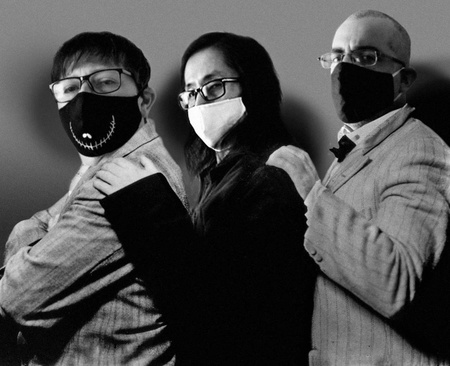
A Nikkei guy
His dark complexion and slanted eyes are contradictory physical features that made Miguel Ángel Vallejo Sameshima feel out of place in Peru and, later, in Europe. “One of my worlds was middle-class, mestizo Lima with white prejudices. Another was my Japanese family, ascetic and ceremonious. And the third was my father's, of Andean migrants with nostalgia for the countryside. My father was a part that didn't quite fit in, just as I didn't fit anywhere either.”
Miguel Ángel says that, on the Japanese side, his family is small (“so given to silence and contemplation and not used to showing their emotions”). “I was disconnected from the colony until I began to do journalism and presented my first book for children in the Peruvian-Japanese Association,” says the author, who highlights that there is very valuable research on the first and second generation Nikkei, but that the third is still a dilemma. “That may be worth exploring,” he says.
In Spain, Miguel Ángel once again felt like a stranger who misses being somewhere else. “The Chinese looked at me and greeted me, some Chinese students knew about the Japanese migration to Peru. “They are societies with a high level of miscegenation.” This book was also a way to organize his memories of that trip in which the gaze of the migrant appears. “Portugal and Spain are like Latin American countries that remained as immigrants in Europe,” he writes, clarifying, making transparent, all those topics that run through the 204 pages of the book.
“I think this pandemic is just the beginning of something much worse,” he writes, returning to the horror genre. For now, he is dedicated to The 3 Types, to his university classes, to the workshop “Theatrical texts: representing from isolation”, of the Economic Culture Fund, waiting for his play Carnaval to return to the stage, after being suspended due to the pandemic, to support his doctoral thesis in Granada and to write. “You write because you don't know,” says Miguel Ángel and, “perhaps if you're lucky, you'll learn.”
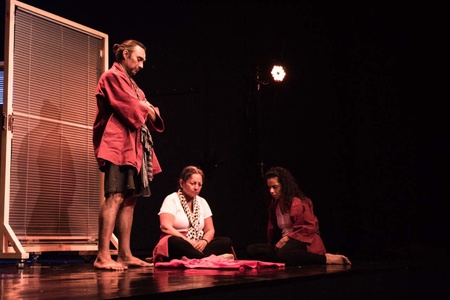
Note:
1. “ 'Vallejo Urreta - Stories of a Peruvian family', by Miguel A. Vallejo Sameshima ,” Cultural Agenda in Lima (June 11, 2015)
© 2020 Javier García Wong-Kit


